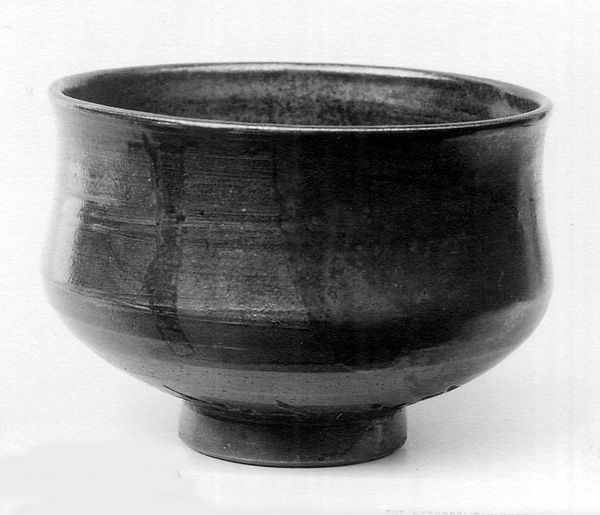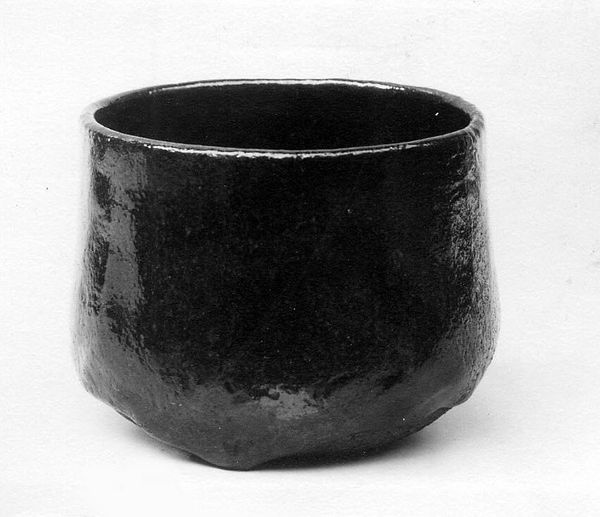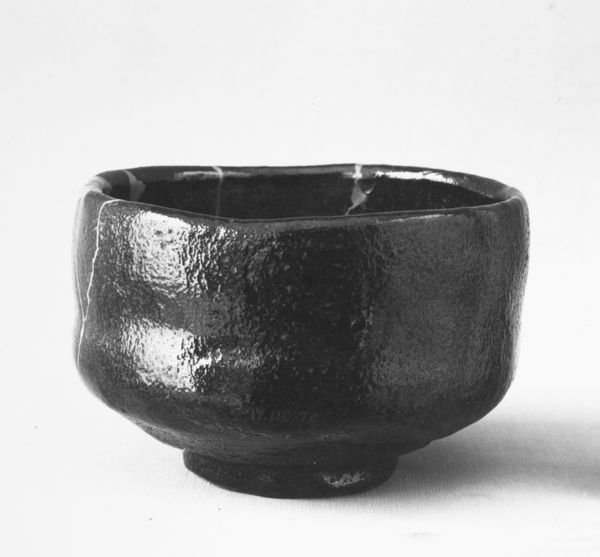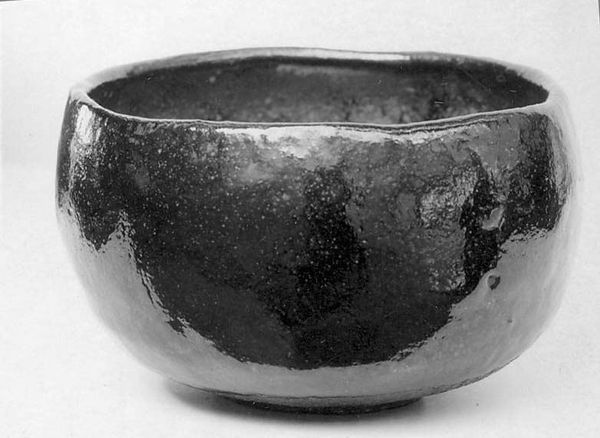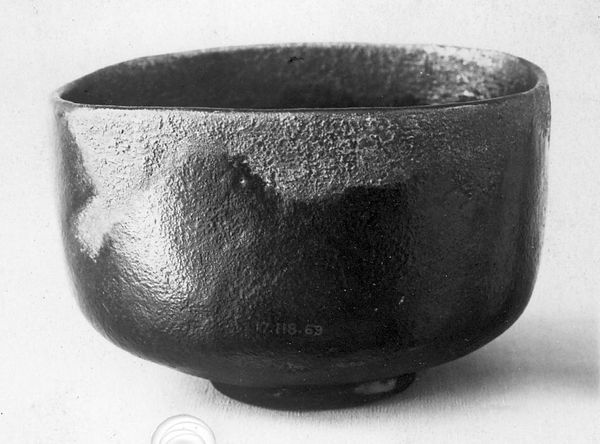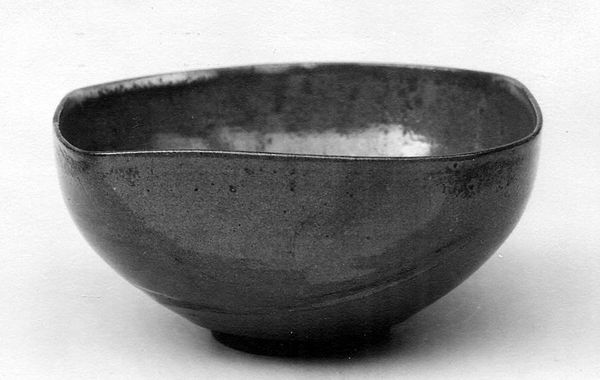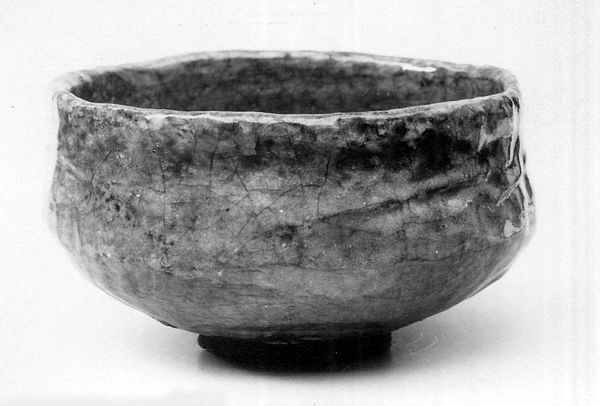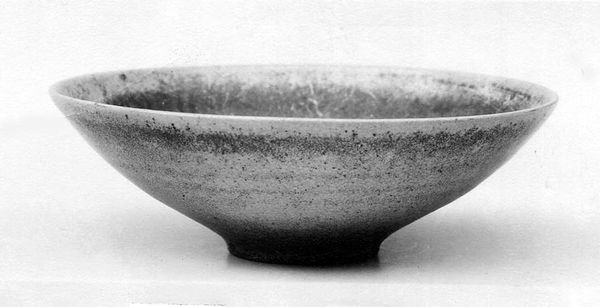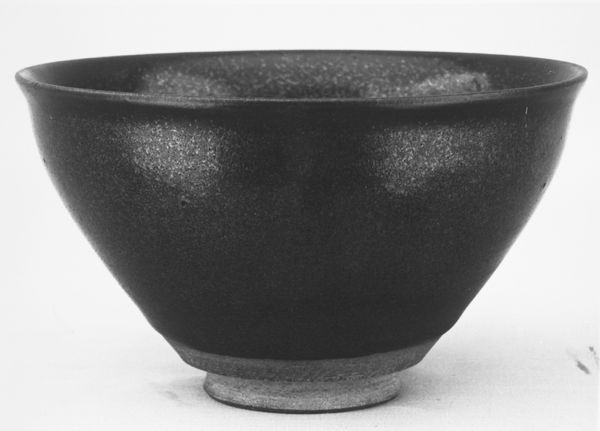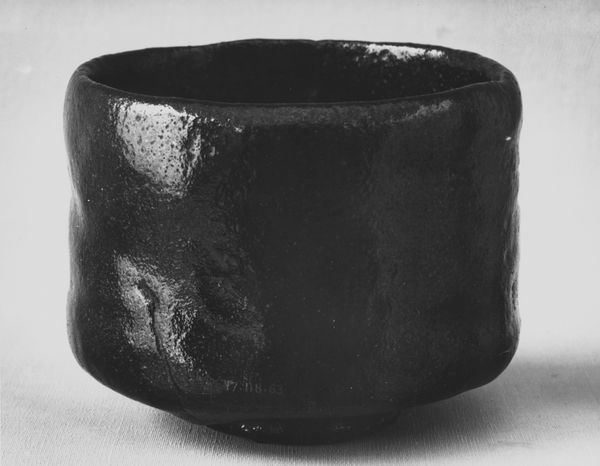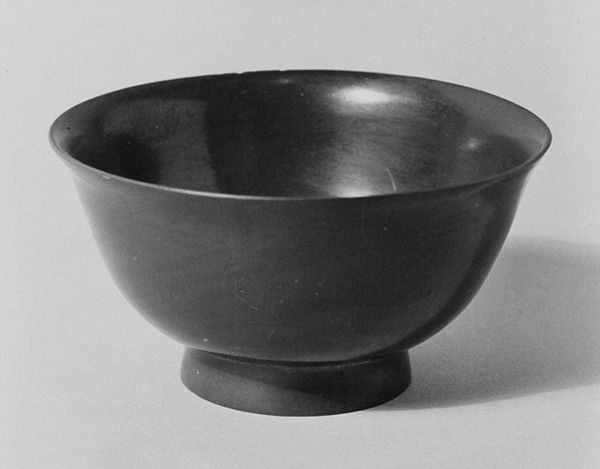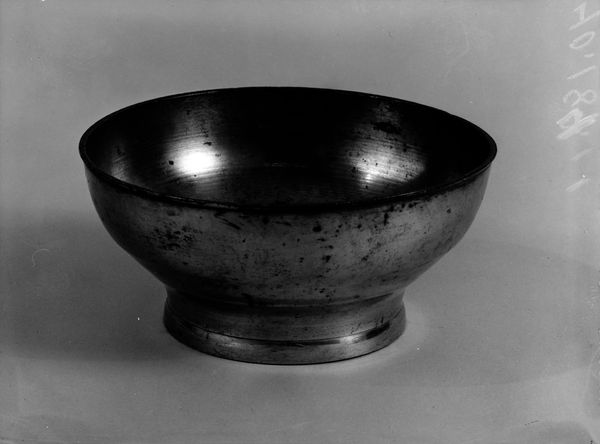
ceramic, earthenware, sculpture
#
asian-art
#
ceramic
#
japan
#
earthenware
#
stoneware
#
geometric
#
sculpture
#
abstraction
Dimensions: H. 3 in. (7.6 cm)
Copyright: Public Domain
This teabowl was made by Kenzan III in Japan around the late 18th or early 19th century. It’s made from stoneware with a dark glaze, and would have been used in the Japanese tea ceremony, also known as ‘chado’, or ‘the way of tea’. Tea ceremonies were carefully choreographed rituals, central to social and political life in Japan at this time. This particular teabowl is associated with the Rinpa school, a historical group of Japanese artists that took inspiration from classical themes and emphasized bold designs. The Kenzan name carries historical significance, as Kenzan I was himself a famous potter who established a unique style, and subsequent generations continued in this tradition. Objects like this teabowl can tell us much about the cultural values of a society, its class structure, and its artistic traditions. By studying historical artworks like this, we can better understand the complex interplay between art and society. Resources like auction records, historical texts, and museum archives can all help us to understand the context in which this work was made.
Comments
No comments
Be the first to comment and join the conversation on the ultimate creative platform.
